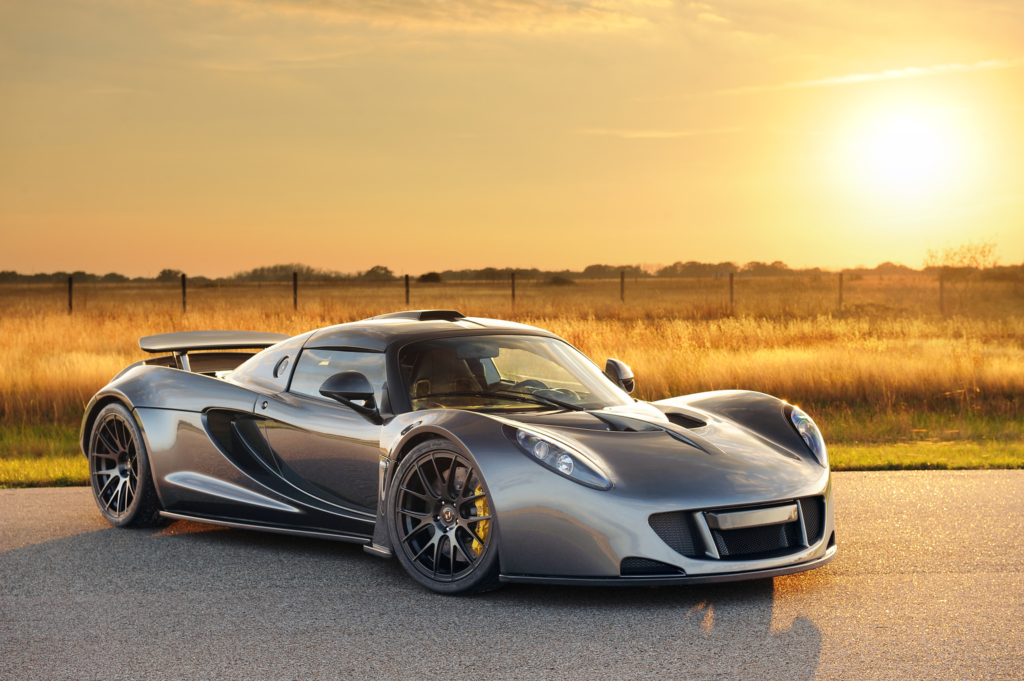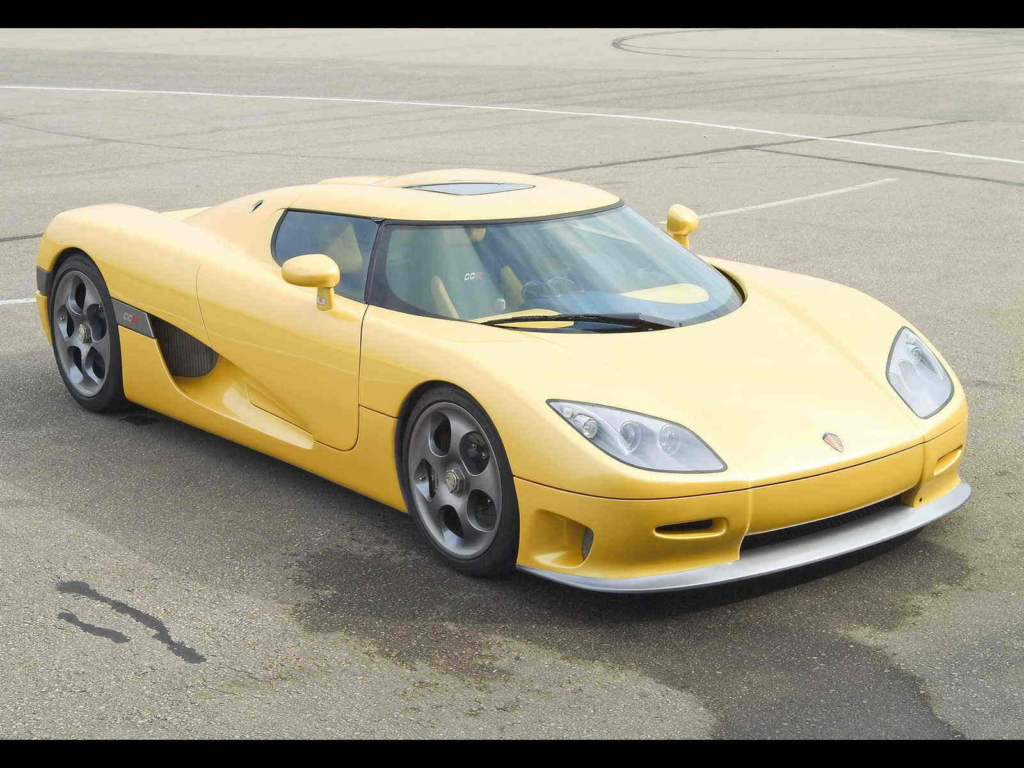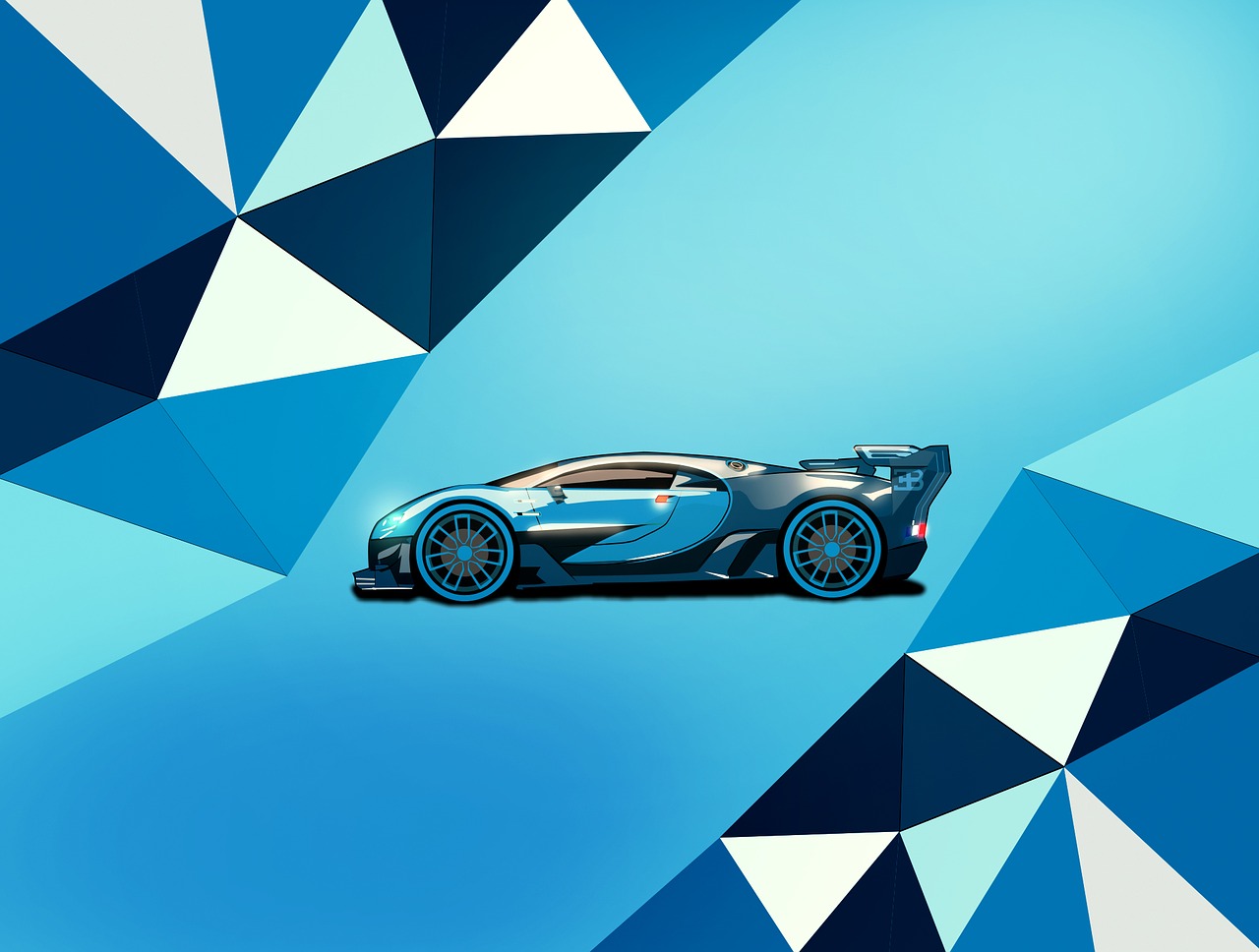Before we get started here, Let's make sure we establish what we mean by "fast". In this article we refer to "fast" as being fast in a straight line. If we were to look at what the actual fastest car in the world is, there would be little contest for Lewis Hamilton's 2019 F1 car. Nothing, (short of an un-restricted Porsche 919 EVO - an unregulated version of their 2015, 2016 and 2017 LeMans winning car) can hold a candle to F1 cars. That being said, let us take a step away from racetracks and professional racing teams and take a look at some amazing top speed missiles.
The common wisdom in the exotic car world is that 0-to-60 is a better benchmark than top speed. There’s almost never an opportunity to hit the top speed anyway, so what does it matter if it’s 350 or 450 km/h?
Well, we’re here to tell you, it matters. Even if you won’t regularly get to go as fast as a small plane, it’d be incredible to know that you could.
What is the World's Fastest Car 2020?
In 1997, the land speed record was set by the experimental Rolls Royce Thrust Supersonic Car. With twin turbine engines, staggered wheels of solid aluminium, and a 30-km stretch of empty flat desert, the Thrust SSC broke the sound barrier and achieved a speed of 1240 km/h. Despite several attempts, this record has never been broken.
However, the Thrust SSC is not what most people think of when they think the word “car.”
It’s 10 tons of metal and rocket fuel perched on wheels. It requires a parachute to stop. It’s so powerful it flies off roads; salt flats are the only safe driving environment. Basically, it’s a fighter jet without wings.
So, when we talk about the “fastest cars in the world,'' we usually mean cars that are a lot slower, but a lot cooler: production cars. A production car is defined as a car that can be mass-produced for sale to the general public—the kind of car that could theoretically be driven right off a car lot onto the road.
As far as production cars go, the fastest by far is made by Bugatti.

Is Bugatti the fastest car in the world?
The current world record was set by a prototype Bugatti Super Sport Chiron 300+.
On August 2, 2019, test driver Andy Wallace took the Bugatti out on a German racetrack. His goal: to break the supposedly unbreakable limit of 300 mph (480 km/h).
His car, the Super Sport prototype, was a heavily modified version of the basic Chiron. The award-winning AWD platform had been enhanced with laser height sensors that raised and lowered the chassis, allowing the car to hug the pavement as closely as possible at all times. The passenger seat was removed; the chassis had been elongated and equipped with a carbon fiber roll cage.
The engine itself had been upgraded, with a quad turbo system adding 100 horsepower to the traditional Bugatti model, for a total of 1580 horsepower, roughly the same as 7 fire trucks put together.
The brake system was compacted. The fins had been removed. The gas tank had only enough for the one run. The total weight was under 1980 kg.
Wallace did a few laps to warm up the engine. Then, on the main drag, he gunned the engine. The car smashed through the 300 mph barrier, briefly hitting 304 before its rpms maxed. This is roughly as fast as a propeller plane or a maglev train at cruising speed.
The prototype has since entered production, and 30 cars will roll out over the course of 2020. The cost of each is set around four million British pounds.
What is the fastest car 0 to 60?
The Bugatti’s massive top speed is more due to its extremely aerodynamic body, which minimizes drag, than it is due to raw acceleration.
In fact, the Bugatti’s 0-60 speed is only 2.4 seconds. Compared to, say, a family station wagon, 2.4 seconds is absurdly fast. However, compared to other exotic cars, it barely cracks the top ten.
The fastest car from 0 to 60 is a prototype Aspark Owl, a low-profile, ultralight, fully electric Japanese sports car. In test runs, it goes from 0 to 60 in under 1.7 seconds.

Aspark’s ridiculous acceleration has been achieved by maximizing the advantages of electric vehicle technology while minimizing the disadvantages. Because electric engines scale down well, the OWL has exchanged the typical engine for four smaller engines, each linked to a wheel. This setup dramatically improves power, and reduces weight, by eliminating the AWD transmission and drivetrain.
Additionally, as an EV, the OWL does not have an exhaust system, meaning that production models do not need catalytic converters, which in most supercars cause a 2-3% loss of engine power. The OWL also has no need for air brakes (electric engines can apply breaking pressure by functionally running in reverse), central cooling, turbos, air intakes, or a carburetor, reducing both weight and drag.
Meanwhile, the Achilles’ heel of EVs, the heavy battery, has been minimized. The OWL battery is relatively small, with a range of 450 km, which drops at higher speeds. This allows for the ultrahigh acceleration, but limits the OWL’s road functionality.
It may be difficult to maintain max horsepower without risking battery damage. The four-engine balance is also probably a bit wonky at high speeds. These problems will prevent the OWL from taking the top speed title this year, but it’s clear that in the acceleration contest, electric vehicles own the future.
What is the fastest American car?
The fastest American car has long been the Hennesey Venom GT, which tops out around 270 mph (435 km/h). The GT, produced in Texas, is an unsubtle, brute-force monster. What it lacks in aerodynamics, it makes up for in it’s horsepower:weight ratio, the best in the world at the time of the model’s release in 2013. It remains a contender for fastest 0-200 acceleration in the world.

However, the GT is getting a little old and gray, and it’s being replaced by the Venom F5, currently in prototype. The F5 is much more sophisticated, built as one piece from the ground up and equipped with active aerodynamics.
The F5 also takes Hennesey’s obsession with power:weight ratios to a ridiculous extreme. At a curb weight of 1338 kg, with a power of 1817 hp, it has almost twice the power per kilogram as the Bugatti Super Sport 300+. Assuming the Hennesey engineers can find tires that can handle its acceleration, keep its wheels from drifting, and manage drag, there is every reason to believe the F5 will beat the Bugatti’s record by as much as 10 mph. However, until tests confirm this, it’s only speculation.
Why are Koenigseggs illegal in the US?
From around 2007-2014, no factory-default Koenigseggs were street legal in either Canada or the U.S. That is, they were legal to own, legal to take to a racetrack, but not the kind of car that you could just pick up and drive from a Mississauga dealership.
There were a few reasons for this including:
- Handling/Chassis Balance: Early Koenigsegg models weren’t meant for highway driving, not even in Europe. As a result, the handling and balancing was not designed to take a 90 degree turn.
- Suspension Geometry: To reduce drag, models such as the 2010 Ageras were held extremely close to the ground. That is fine on the racetrack, or even on well-maintained European roads like the Autobahn, but terrible in North America. Imagine having your undercarriage hit the side of a Toronto pothole at high speed, and you’lll understand why they were banned for so long.
- No Converters: The Koenissegs use turbochargers—turbines that harness the motion of the exhaust to inject more fresh air into the engines. Catalytic converters create back pressure that slows these turbines and prevents the engines from hitting their top speed. For race cars such as the early Koenissegs, these converters were removed.
Fuel Standards: Koenisseg engines were traditionally designed for race fuel, meaning either leaded gasoline or 100% ethanol. Leaded gasoline does not pass emissions standards, while 100% ethanol does not work well at low temperatures. For those reasons, Canada and parts of the U.S. did not tend to approve of the old engines.
The 10 Fastest Cars in the World
Below are the top ten fastest production cars in the world.

The FT1 is the only model manufactured by Zenzo, a tiny outfit in Denmark. Based on a design from 2006 and almost entirely handmade, it is a bit rough around the edges. Its chassis is boxy and its safety rating is poor. However, it’s got speed. Due to an ultralight carbon fiber frame, its 1050-odd horsepower propel it into the top ten fastest production cars in the world.
Koenigsegg CCR: 387 km/h

Source: Koenigsegg
A bit faster and much sleeker, the Koenigsegg CCR is a time-honored supercar that has been dominating the roads since it first shattered records to become the fastest production car speed in 2005. With a distinctive look imparted by a deep windshield curve and a set of upwards-opening doors, it was the iconic supercar for a generation of collectors. Most models are not street legal in the U.S. or Canada, due to fuel and emissions concerns.
Dauer 962 Le Mans: 405 km/h

The Le Mans came about through some subterfuge by Porsche. See, in the late 80s and 90s, Porsche was absolutely crushing the European race circuit. Their 962 models stayed just under the max fuel consumption of the bigger races, while delivering extreme speed at an affordable cost. As a result, privateers switched over to Porsche en masse, turning many races into contests between many drivers driving the same car.
The World Sportscar Championship tried to crack down on this in 1992 with a series of “cost-saving” regulations that excluded Porsche engines, while forcing teams to use conventional F1 engines. Drivers, and fans, were not impressed. Neither were the executives at Porsche.
In 1994, Porsche found a way to get back into the race. A small German company, Dauer, built a custom car by heavily modifying a 962, swapping out metal components for kevlar in order to meet the new GT requirements.
Normally, a custom prototype would not be allowed to race. But Porsche lent factory time to Dauer, allowing Dauer to plausibly claim that the car was a production model. Dauer’s car was allowed into 24 Hours of Le Mans and won handily, making race history.
However, the “production car” ruse was always a little thin. Dauer only ended up making 13 of these before Porsche took back their factory time, making it the rarest supercar on the list.
Bugatti Veyron EB 16.4: 408 km/h

Named for the Golden Age race car driver, and later French resistance fighter, Pierre Veyron, this is the record-breaker that put Bugatti on the map.
This car foreshadowed the move to active aerodynamics by giving drivers a “speed key.” When the speed key is turned, the rear wing and spoiler retract and the chassis is lowered closer to the road. This reduces drag and downforce, increasing speed at the expense of handling. This innovation allowed the Veyron to reach previously unimagined top speeds.
9FF GT9: 409 km/h

Like the Dauer 962, the 9FF is fundamentally a modified Porsche. This time, the external company made more significant modifications, upgrading the engine significantly and moving it to the middle. This improved the weight distribution, allowing for a more streamlined profile, which helped it push past the mark set by the Veyron and bring the Porsche platform back to the forefront.
SSC Ultimate Aero TT: 412 km/h

SSC is a small American hypercar manufacturer, run out of Washington State. From 2005 to 2007, they were openly planning the Ultimate Aero Twin Turbo. According to its official specs, the Ultimate Aero was expected to slightly trail the Veyron, clocking in around 400 km/h, thanks to its innovative twin turbo exhaust system.
However, it turns out the SSC underestimated themselves. The prototype had an engine that ran with such buttery smoothness that it could tolerate red-line rpms for ages, allowing it to push past the Veyron’s speed and earn America its first speed record.
Bugatti Veyron 16.4 Super Sport: 431 km/h

The U.S. didn’t hold its record for long, because Bugatti was coming back strong with an upgraded Veyron. The Super Sport used a refined version of the speed key aerodynamic package and came with a more powerful engine, increasing the top speed. However, here in car history is where engined began to outstrip tire technology. Even with Veyron’s famously low downforce, 430 km/h burned through tires within minutes. On test runs, new tires were added after each time the speed maxed out. To prevent high-speed blowouts, Bugatti was forced to add an electronic limiter, preventing casual drivers from exceeding 415 km/h.
Hennesey Venom GT: 435 km/h

Koenigsegg Agera RS: 447 km/h

After ten years out of the spotlight, Koenisseg finally captured the world’s attention with the Agera RS. The design of this car shows that the Swedes had been closely watching their competitors. The rear wing moves dynamically and automatically, decreasing downforce gradually after speed exceeds 250 km/h. The engine is twin turbo, similar to SSC’s Ultimate Aero, but with a higher displacement.
However, Koenigsegg also pushed the envelope forward with their One:1 platform: making cars with a 1:1 horsepower:weight ratio. For every kg of car, the engine provided 1 horsepower. This was achieved by finally ditching the kevlar in favor of carbon fibre plating, as well as through continuous improvements in engine and exhaust efficiency.
Bugatti Chiron Super Sport: 491 km/h
Here it is again: the fastest car in the world. It’s over 100 km/h faster than the first car on this list; that’s just how far technology has come in the last twenty years.
The fastest Accelerating Cars in the world - Top Fuel Dragsters
Now, this doesn't count because... Race car but, while on the topic of top speed and acceleration, We would be remiss not to mention this amazing form of motorsports. Top Fuel Dragsters, if you have never seen the numbers, produce some of the most staggering figures one can find:
Brittany Force currently holds the record for the fastest dragster pass in top fuel history. Over the length of exactly 1000 ft, Brittany took the incredible machine from zero to 336.57 mp/h in 3.659 seconds.
That's 541.6 km/h.
More than 40 km/h faster than a Chiron...However, as seen in the video above, it takes the Bugatti a "full minute" just to get from 300 km/h to 490 km/h.
What does this look like you say? We thought you'd never ask...
